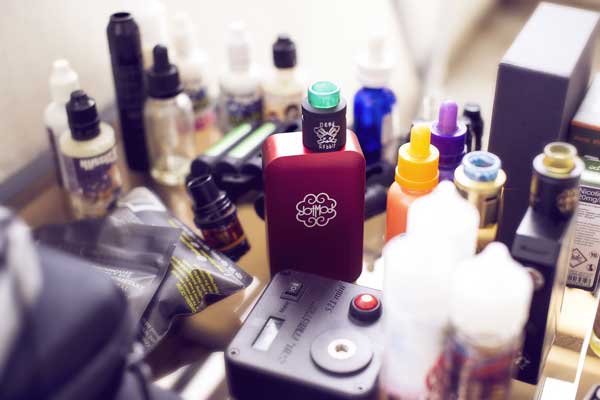Illicit vapes disguised as gadgets flood U.S. market

[A photo of various vaping devices randomly arranged. Photo Credit to Unsplash]
U.S. authorities are intensifying efforts to combat a surge in illegal vaping products entering the country disguised as everyday items, aiming to reach underage users and circumvent federal regulations.
These devices, often shaped like game consoles, headphones, or even highlighters, have triggered a wave of coordinated crackdowns by federal agencies, exposing the growing scale and sophistication of the illicit vaping trade.
Most of these unauthorized products originate from China and are specifically tailored to appeal to American teens.
Their sleek designs and vibrant colors often mimic familiar consumer electronics, making them harder to detect.
Some even feature Bluetooth connectivity, LED lights, and hidden compartments.
Flavored with sweet and fruity profiles like blueberry custard or tropical punch, the devices continue to attract young consumers, despite a 2020 FDA ban on flavored cartridge-based-e-cigarettes.
Yet these flavored products remain widely accessible in convenience stores and online marketplaces across the U.S., often with little to no oversight.
In response, the U.S. Food and Drug Administration (FDA) has issued more than 700 warning letters to retailers, though many continue to operate without consequences.
Customs and Border Protection (CBP) reports a dramatic rise in seizures, with more than $60 million worth of illicit e-cigarette products confiscated in just the first half of 2025, up from $34 million in all of 2024.
Warehouses across the country are now overflowing with seized products.
In Chicago, 4 million illegal vape sticks are currently being stored, yet officials stress this represents only a fraction of what is likely in circulation.
In Louisiana and other states, law enforcement has uncovered increasingly elaborate smuggling methods, including false car compartments and hidden safes.
The market for these products continues to thrive online, boosted by aggressive marketing on platforms frequented by younger audiences.
These ads frequently promote the discreet features of the devices while capitalizing on trends popular among teens.
This strategy has helped illegal vape sellers bypass not only regulations but also parental oversight.
Many parents may not realize they are purchasing a nicotine device when their children request what appears to be a harmless accessory.
Although the vaping industry is already worth billions, experts suggest the illicit sector is even larger.
The CDC Foundation reports that 21.1 million e-cigarettes are sold legally each month, yet other analyses estimate that 240 million illegal vaping products were sold across the U.S. in 2024 alone.
That discrepancy reveals the scale of the shadow market now operating beneath the surface of the legal one.
Youth vaping remains a pressing public health concern.
According to the 2024 National Youth Tobacco Survey, more than 1.6 million American teens reported using e-cigarettes.
Many of these unregulated devices contain nicotine levels equivalent to multiple packs of cigarettes, heightening the risk of addiction and long-term developmental harm.
Currently, only 39 vape products are authorized for sale by the FDA, all limited to tobacco and menthol flavors.
Yet the influx of unauthorized and attractively packaged devices continues to grow.
In cities like New York, law enforcement has begun conducting near-daily raids on retailers, seizing non-compliant products and issuing citations.
Still, the pipeline of illegal imports shows no sign of slowing.
In April 2025, over two dozen state attorneys general urged the White House to take stronger federal intervention, calling the influx of illegal vaping products an international threat.
With China serving as a major export hub and U.S. demand showing few signs of abating, experts warn that enforcement strategies must keep evolving to counter the rapidly changing tactics of vape manufacturers and distributors.
As federal and local officials continue to adapt their approach, the fight against illegal vaping devices remains a high-stakes effort to protect young Americans from products increasingly designed to avoid both detection and regulation.

- Seokin Joung / Grade 12
- St. Johnsbury Academy in Jeju

![THE HERALD STUDENT REPORTERS [US]](/assets/images/logo_student_us.png)
![THE HERALD STUDENT REPORTERS [Canada]](/assets/images/logo_student_ca.png)
